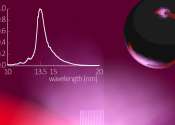Data reveal a surprising preference in particle spin alignment
Given the choice of three different "spin" orientations, certain particles emerging from collisions at the Relativistic Heavy Ion Collider (RHIC), an atom smasher at the U.S. Department of Energy's (DOE) Brookhaven National ...









